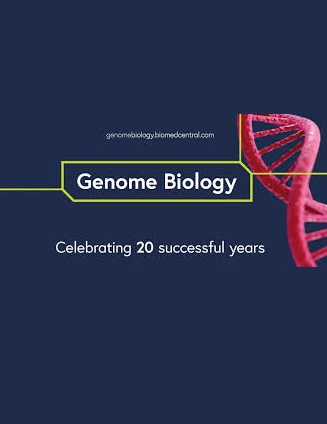Hmgb2通过增加与神经元成熟相关的基因的染色质可及性,以神经元前因子依赖的方式促进星形胶质细胞向神经元的转化
IF 10.1
1区 生物学
Q1 BIOTECHNOLOGY & APPLIED MICROBIOLOGY
引用次数: 0
摘要
将反应性胶质细胞直接转化为神经元是脑损伤或神经变性后神经元替代治疗的一种很有前途的途径。神经源性命运决定因子在神经胶质细胞中的过度表达导致转化为神经元。为了修复的目的,这种转换最好是在病理诱导的神经炎症环境中进行。然而,关于损伤诱导的神经炎症环境和释放的生长因子对直接转化过程的影响知之甚少。我们建立了一种不含表皮生长因子的出生后星形胶质细胞体外培养体系,该体系反映了星形胶质细胞在体内损伤的神经炎症环境中的直接转化率。我们证明了与损伤环境相对应的生长因子组合决定了胶质细胞直接转化为神经元的能力。利用该培养体系,我们发现染色质结构蛋白高迁移率组盒2 (HMGB2)调节生长因子组合下游的直接转化率。我们进一步证明,Hmgb2与神经源性命运决定因素(如Neurog2)合作,在调节神经元成熟和突触形成的基因位点打开染色质。因此,早期染色质重排发生在直接命运转化过程中,并且是完全命运转化所必需的。我们的数据表明,在直接命运转化过程中,新的生长因子控制的基因表达调控。这种调节对于诱导神经元的适当成熟至关重要,可以靶向改善修复过程。本文章由计算机程序翻译,如有差异,请以英文原文为准。
Hmgb2 improves astrocyte to neuron conversion by increasing the chromatin accessibility of genes associated with neuronal maturation in a proneuronal factor-dependent manner
Direct conversion of reactive glial cells to neurons is a promising avenue for neuronal replacement therapies after brain injury or neurodegeneration. The overexpression of neurogenic fate determinants in glial cells results in conversion to neurons. For repair purposes, the conversion should ideally be induced in the pathology-induced neuroinflammatory environment. However, very little is known regarding the influence of the injury-induced neuroinflammatory environment and released growth factors on the direct conversion process. We establish a new in vitro culture system of postnatal astrocytes without epidermal growth factor that reflects the direct conversion rate in the injured, neuroinflammatory environment in vivo. We demonstrate that the growth factor combination corresponding to the injured environment defines the ability of glia to be directly converted to neurons. Using this culture system, we show that chromatin structural protein high mobility group box 2 (HMGB2) regulates the direct conversion rate downstream of the growth factor combination. We further demonstrate that Hmgb2 cooperates with neurogenic fate determinants, such as Neurog2, in opening chromatin at the loci of genes regulating neuronal maturation and synapse formation. Consequently, early chromatin rearrangements occur during direct fate conversion and are necessary for full fate conversion. Our data demonstrate novel growth factor-controlled regulation of gene expression during direct fate conversion. This regulation is crucial for proper maturation of induced neurons and could be targeted to improve the repair process.
求助全文
通过发布文献求助,成功后即可免费获取论文全文。
去求助
来源期刊

Genome Biology
Biochemistry, Genetics and Molecular Biology-Genetics
CiteScore
21.00
自引率
3.30%
发文量
241
审稿时长
2 months
期刊介绍:
Genome Biology stands as a premier platform for exceptional research across all domains of biology and biomedicine, explored through a genomic and post-genomic lens.
With an impressive impact factor of 12.3 (2022),* the journal secures its position as the 3rd-ranked research journal in the Genetics and Heredity category and the 2nd-ranked research journal in the Biotechnology and Applied Microbiology category by Thomson Reuters. Notably, Genome Biology holds the distinction of being the highest-ranked open-access journal in this category.
Our dedicated team of highly trained in-house Editors collaborates closely with our esteemed Editorial Board of international experts, ensuring the journal remains on the forefront of scientific advances and community standards. Regular engagement with researchers at conferences and institute visits underscores our commitment to staying abreast of the latest developments in the field.
 求助内容:
求助内容: 应助结果提醒方式:
应助结果提醒方式:


